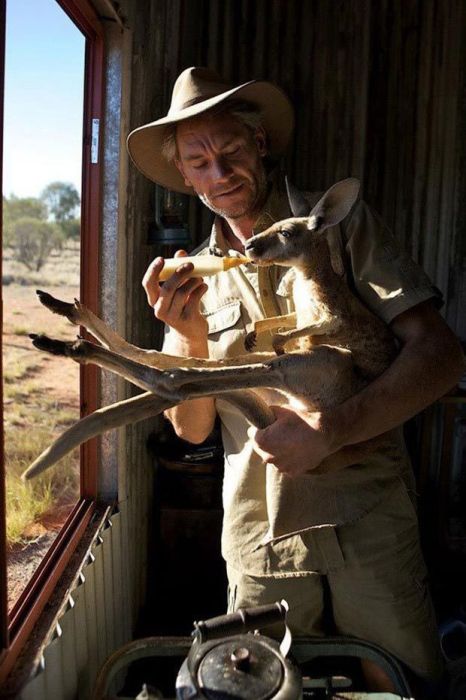|
|
Rescuing Kangaroos, Kangaroo Dundee, Chris Brolga Barns
|
• Blindness
Eye disease is rare but not new among kangaroos. The first official report of kangaroo blindness took place in 1994, in central New South Wales. The following year, reports of blind kangaroos appeared in Victoria and South Australia. By 1996, the disease had spread "across the desert to Western Australia". Australian authorities were concerned the disease could spread to other livestock and possibly humans. Researchers at the Australian Animal Health Laboratories in Geelong detected a virus called the Wallal virus in two species of midges, believed to have been the carriers. Veterinarians also discovered less than 3% of kangaroos exposed to the virus developed blindness.
• Reproduction and life cycle
Kangaroo reproduction is similar to that of opossums. The egg (still contained in the evolutionary remnant of a shell, a few micrometres thick, and with only a small quantity of yolk within it) descends from the ovary into the uterus. There it is fertilised and quickly develops into a neonate. Even in the largest kangaroo (the red kangaroo) the neonate emerges after only 33 days. Usually, only one young is born at a time. It is blind, hairless, and only a few centimetres long; its hindlegs are mere stumps; it instead uses its more developed forelegs to climb its way through the thick fur on its mother's abdomen into the pouch, which takes about three to five minutes. Once in the pouch, it fastens onto one of the four teats and starts to feed. Almost immediately, the mother's sexual cycle starts again. Another egg descends into the uterus and she becomes sexually receptive. Then, if she mates and a second egg is fertilised, its development is temporarily halted. Meanwhile, the neonate in the pouch grows rapidly. After about 190 days, the baby (joey) is sufficiently large and developed to make its full emergence out of the pouch, after sticking its head out for a few weeks until it eventually feels safe enough to fully emerge. From then on, it spends increasing time in the outside world and eventually, after about 235 days, it leaves the pouch for the last time. The lifespan of kangaroos averages at six years in the wild to in excess of 20 years in captivity, varying by species. Most individuals, however, do not reach maturity in the wild.
|
|









